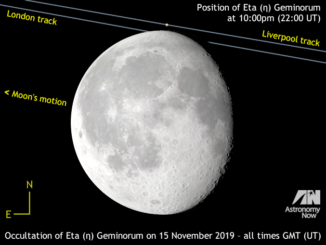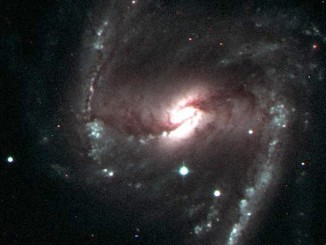
Will you see the Moon hide naked-eye star Eta (η) Geminorum on 15 November?
Lucky observers with clear skies who also happen to live on a line drawn between Porthcawl on the Welsh coast through just south of Birmingham and on to the Lincolnshire Wolds can witness a grazing lunar occultation of naked-eye star Eta (η) Geminorum by the rising 18-day-old waning gibbous Moon just before 10pm GMT on 15 November 2019.


